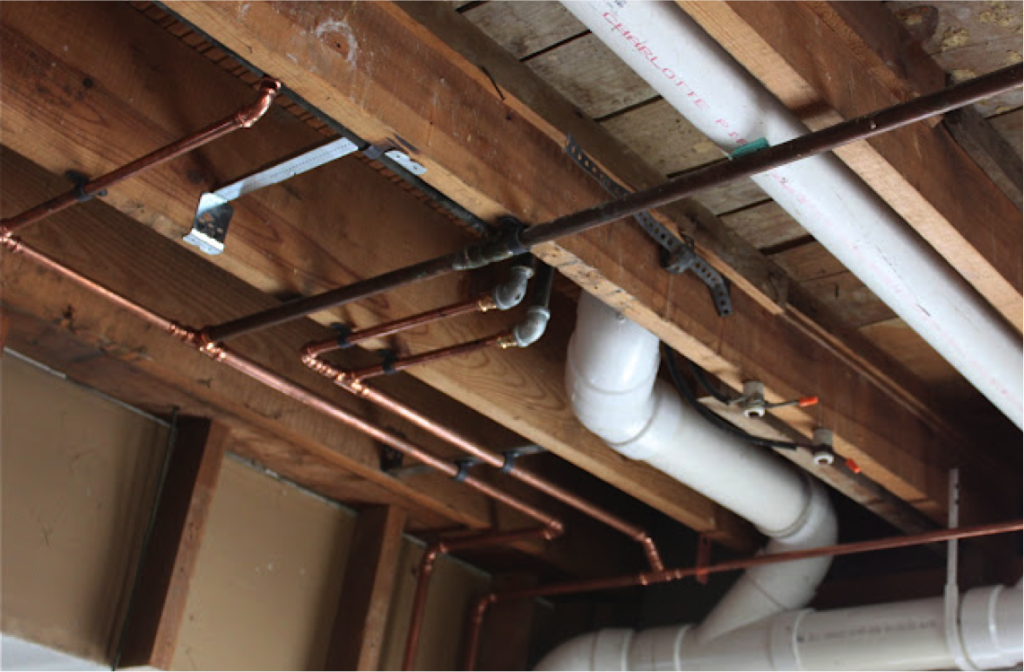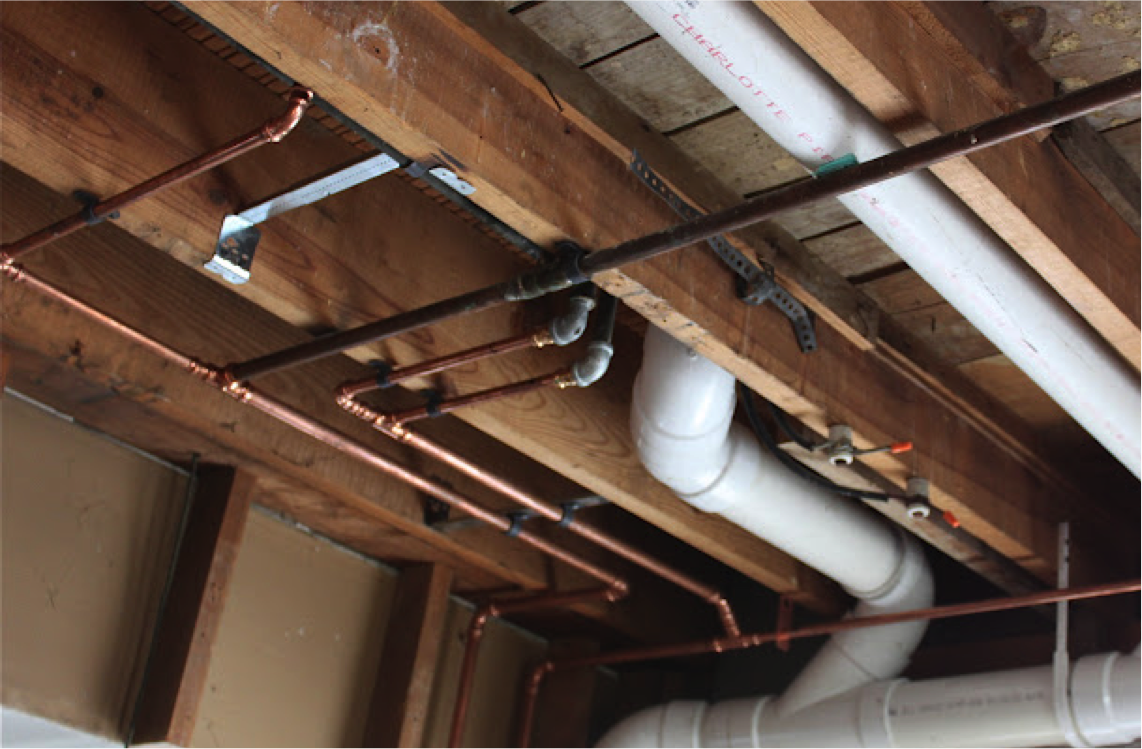Dealing with a leaking pipe in the basement ceiling can be a homeowner’s worst nightmare. Not only does it pose immediate risks of water damage and mold growth, but it also indicates underlying plumbing issues that require urgent attention. In this comprehensive guide, we’ll delve into the common causes of leaking pipes in basement ceilings, how to identify the problem, and the best strategies for effective repair and prevention.

Understanding Leaking Pipe in Basement Ceiling
A leaking pipe in the basement ceiling can stem from various sources, including:
- Burst or Cracked Pipes: Extreme temperatures, corrosion, or physical damage can cause pipes to burst or develop cracks, leading to water leakage.
- Faulty Joints: Poorly sealed pipe joints or fittings can result in water seepage at connection points.
- High Water Pressure: Excessive water pressure can put strain on pipes, causing them to leak or rupture.
- Clogged Drains: Blocked drains can cause water to back up and overflow, putting pressure on pipes and causing leaks.
- Foundation Settlement: Shifting or settling of the foundation can cause pipes to become misaligned or damaged, resulting in leaks.
Read too: How To Extend Kitchen Cabinets To The Ceiling: A Complete Guide for Maximizing Space and Style
Signs of a Leaking Pipe in Basement Ceiling
Identifying a leaking pipe in the basement ceiling early is crucial to prevent extensive water damage. Look out for the following signs:
- Water Stains: Discoloration or water stains on the ceiling or walls may indicate water leakage from above.
- Dripping Water: If you notice water dripping from the ceiling or pooling on the floor below, it’s a clear sign of a leak.
- Mold or Mildew: The presence of mold or mildew on the ceiling or walls, accompanied by a musty odor, suggests excess moisture from a leak.
- Decreased Water Pressure: A sudden drop in water pressure throughout the house may indicate a leak in the plumbing system.
- Visible Damage: Bulging or sagging areas of the ceiling, peeling paint or wallpaper, or warped flooring are all signs of water damage caused by a leak.
Steps to Address a Leaking Pipe in Basement Ceiling
1. Shut Off Water Supply
As soon as you notice signs of a leaking pipe, turn off the main water supply to prevent further damage and flooding.
2. Identify the Source
Carefully inspect the basement ceiling for the source of the leak. Look for dripping water, wet spots, or signs of moisture along pipes or fittings.
3. Repair or Replace Pipe
Depending on the severity of the damage, you may need to repair or replace the leaking section of the pipe. If you’re not comfortable with DIY plumbing repairs, it’s best to hire a licensed plumber for professional assistance.
4. Dry Out the Area
Thoroughly dry out the affected area using fans, dehumidifiers, or a wet/dry vacuum to prevent mold growth and further damage to building materials.
5. Repair Water Damage
Once the leak has been addressed, repair any water damage to the ceiling, walls, or flooring. This may involve patching drywall, repainting, or replacing damaged materials.
Preventive Measures
To prevent future leaks in the basement ceiling, consider the following preventive measures:
- Regular Maintenance: Inspect plumbing pipes and fittings for signs of corrosion, wear, or damage, and address any issues promptly.
- Insulation: Properly insulate pipes to protect them from freezing and bursting during cold weather.
- Pressure Regulation: Install a pressure regulator to control water pressure and prevent strain on pipes.
- Drain Maintenance: Keep drains clear of debris and regularly clean gutters to prevent water backup and overflow.
Conclusion
A leaking pipe in the basement ceiling is a serious issue that requires immediate attention to prevent water damage and mold growth. By understanding the common causes, signs, and steps for addressing a leak, homeowners can take proactive measures to protect their property and ensure the integrity of their plumbing system.
